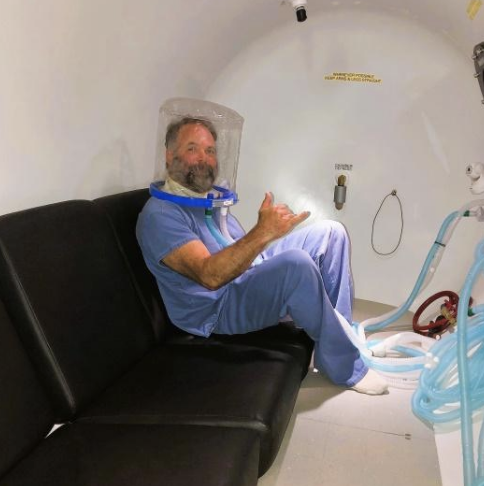
Traumatic Brain Injury: The “Signature Injury” of members of the U.S. Armed Forces
Post traumatic stress disorder (PTSD) and mild traumatic brain injury (mTBI) are two of the most prevalent injuries suffered by members of the U.S. Armed Forces. The Defense and Veterans Brain Injury Center reported total cases of mTBI between 2000 and 2021 to be nearly 454,000 but many veterans are not diagnosed for months or years after separating from service. TBI and PTSD are injuries that affect the whole family and active duty members, veterans and their families are suffering.
What is Traumatic Brain Injury (TBI)?
TBI is caused by a jarring of the head possibly from a fall, accident, explosion, repeated gunfire exposure or a blow to the head. The jarring causes damage to brain tissue, blood vessels and cells that link areas of the brain and the brain to the body. Symptoms are insidious and, if left untreated, worsen over time. Symptoms may include confusion, vertigo, sleep disturbance, memory loss, headaches, blurred vision, tinnitus, anger, mood swings, slowed thinking, depression, anxiety and suicidal ideation. A complicating risk factor for mTBI is a person’s lifetime accumulation of TBI events. Receiving multiple concussions has been associated with greater risk of developing progressive neurodegenerative conditions, like chronic traumatic encephalopathy (CTE) and early-onset dementia. Many veterans will not receive early diagnosis or will not seek treatment and in individuals with chronic, persistent symptoms of TBI, traditional medical interventions may be less than successful.
A complicating risk factor for mTBI is a person’s lifetime accumulation of TBI events. Receiving multiple concussions has been associated with increased risk of suicidal ideation as well as greater risk of developing progressive neurodegenerative conditions, like chronic traumatic encephalopathy (CTE) and early-onset dementia. Many veterans will not receive early diagnosis or will not seek treatment and in individuals with chronic, persistent symptoms of TBI, traditional medical interventions may be less than successful.
The Power of HBOT
The power of HBOT is in the processes that occur in the body when breathing 100% oxygen at simulated depths below sea level. During therapy, studies have shown that HBOT helps reduce inflammation, create new blood vessels (angiogenesis), improve cellular functions, trigger the mobilization and growth of new stem cells and help eliminate anaerobic bacteria.
By going under pressure, oxygen is forced to dissolve into the plasma and get to the injured areas, saturating the hypoxic tissue, muscle and bone. This forces the inflammation to go down and the growth of new blood vessels forcing accelerated healing, which reduces bruising, swelling and pain. Increased oxygen also stimulates stem cells and reduces lactic acid.
How Does HBOT Improve Symptoms of TBI?
 HBOT has been used to treat decompression sickness for more than 75 years. It is used daily in hospitals to reduce inflammation and heal wounds. Here, we just use it to help reduce inflammation and heal the wound in the brain.
HBOT has been used to treat decompression sickness for more than 75 years. It is used daily in hospitals to reduce inflammation and heal wounds. Here, we just use it to help reduce inflammation and heal the wound in the brain.
Recent tudies show the efficacy of HBOT for numerous health conditions including mental health conditions like depression, anxiety and symptoms of PTSD. Research published in March 2022 showed symptomatic and cognitive improvements in veterans with mTBI Persistent Postconcussion Syndrome who received hyperbaric oxygen therapy. In the past, it was believed that once brain cells were injured they could not be revitalized. In the recent past, studies have shown injured cells can rejuvenate with the increased pressure to force 100% oxygen to the injured tissue. Evidence such as SPECT imaging, computer-based cognitive assessments, self-assessments and QEEG conducted pre and post therapy prove the efficacy of hyperbaric oxygen therapy as effective and a healthy intervention for many types of brain injuries.
What to Expect

Here at Tier I Therapy Centers, you will receive HBOT in one of our two hyperbaric chambers. In our four-person, multi-place chamber, 100% oxygen is administered through a light weight hood while the chamber is pressurized in air to specific depths below sea level. You will remain at depth for 60 to 90 minutes, depending on your prescription. You will be in the sitting position during treatment and can read or watch a family-friendly movie provided by our staff.
Testimonial – Dave’s Story: https://www.youtube.com/watch?v=6eDg4oWVJNQ
Dave explains in this video, “One of the things I want to appeal to veterans who might be seeing this video is that I (and just about everybody that I have talked to) was the hardest person to persuade to go [to hyperbaric oxygen therapy] because I think all of us have this innate feeling is that somebody has it worse and they should go. And that may be true, that there are plenty of other veterans who are suffering from TBI symptoms worse than you. But you have to realize these symptoms do not get better without treatment. They only get worse.
So if you’re out there and you are on the fence, you need to think in terms of do I want to be a better father? Do I want to be a better husband? Do I want to perform better in whatever I am doing in my life? Because if the answer to any of those is yes, then you need to sign up and not worry about the guys who aren’t, get in [there] and get treated.”
What are you waiting for? Tier I Therapy Centers have been helping veterans with traumatic brain injury heal since 2014. Let us help you get back in the game now. To learn more about hyperbaric oxygen therapy for brain injury, call 757-452-3934.
*Disclaimer: Information provided here is not to be considered medical advice. Hyperbaric oxygen therapy for non-approved, off-label indications is considered to be investigational.


